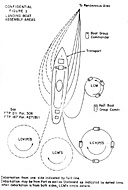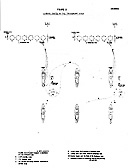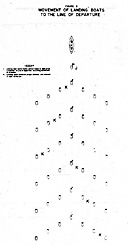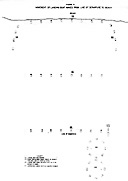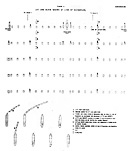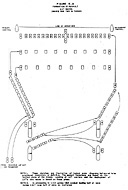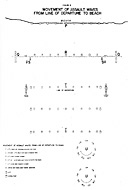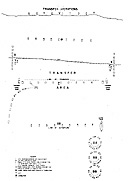
Chapter IV
The Tactical Employment of Landing Boats
LVTs and DUKWs in the Ship-to-Shore Movement
Index
| Section 1. | General. |
| Section 2. | The Tactical Employment of Landing Boats in the Ship-to-Shore Movement. |
| Section 3. | The Tactical Employment of LVTs in the Ship-to-Shore Movement. |
| Section 4. | The Tactical Employment of DUKWs in the Ship-to-Shore Movement. |
| Section 5. | Unloading Operations. |
Section 1. General
- The basic concept of the Ship-to-Shore Movement is set forth in Chapter IV of FTP 167. Further detailed instructions on the landing boat organization, the duties of landing boat commanders and the control of the landing boats are contained in Chapters III, IV, and V of FTP 211 and Chapter IX of this doctrine.
- The problems introduced by the presence of natural and artificial underwater obstructions in the approaches to landing beaches have brought about major changes in the Ship-to-Shore Movement in these special cases.
-
This chapter sets forth the procedure for:
- The tactical employment of landing boats in the Ship-to-Shore Movement under conditions where approach to the beaches is either unrestricted or sufficiently cleared of underwater obstructions to permit boats to reach the shore line over a large portion of the beach to be assaulted.
- The tactical employment and operation of LVTs in the Ship-to-Shore Movement under conditions where either natural or artificial obstructions are present in the approaches to and on the beaches which make the beach accessible only to LVTs.
- The tactical employment of DUKWs in the Ship-to-Shore Movement and in support of landings.
- The employment of landing boats, LVTs and DUKWs in post-assault unloading operations.
- Obstructions in the approach to landing beaches may consist of natural obstacles, such as barrier reefs, coral heads, and pinnacles, sand bars and rocks; man-made obstacles may include horned sculleys, tetrahedrons, jetted rails, pipes, hedgehogs, cribs, log barriers and wire fencing, supplemented by various types of mines. The condition of surf and tide have a direct effect on the ability of the
